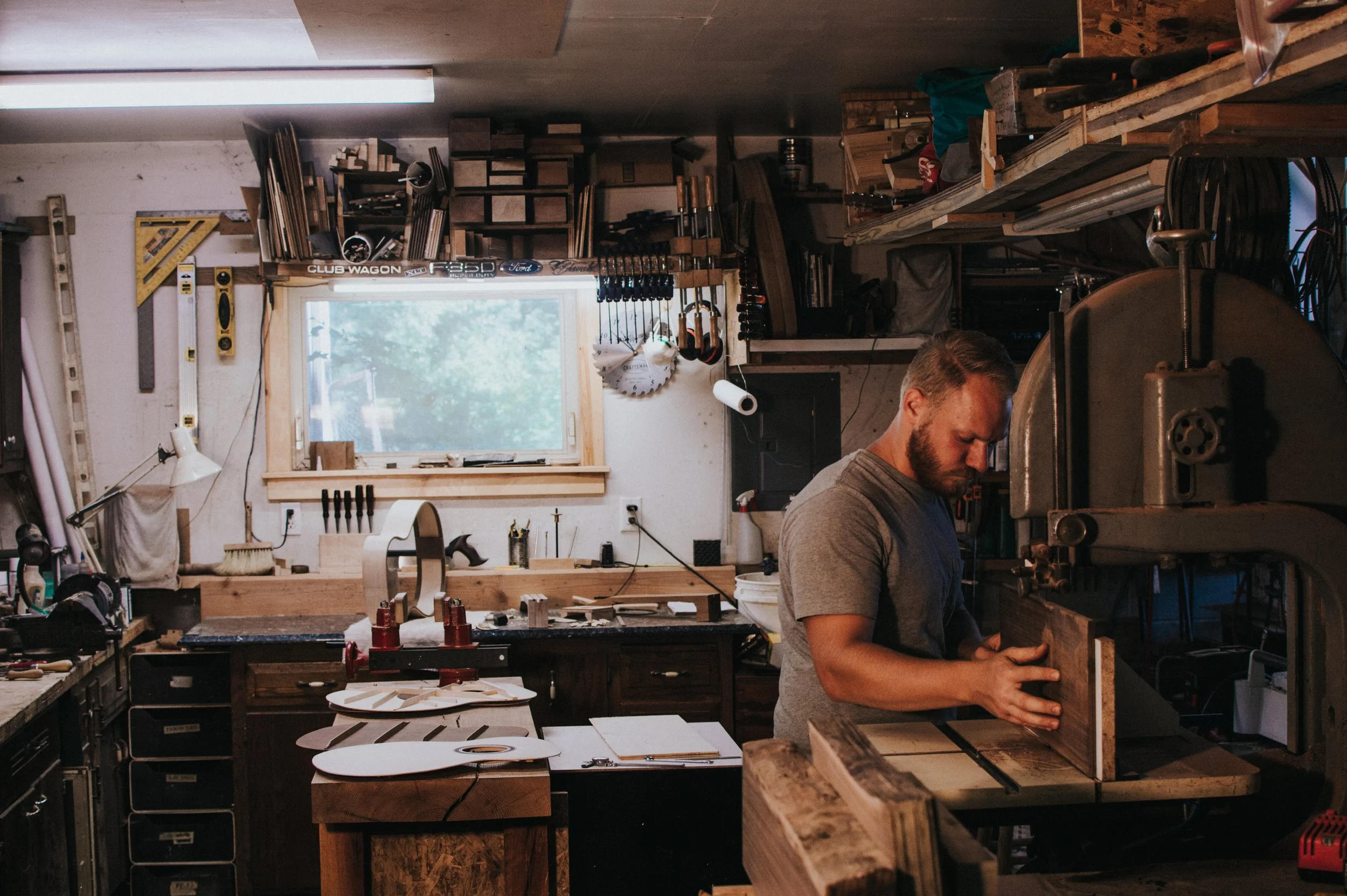
Pricing & Options
I currently build two models, OM and Dreadnought.
base price for all models: $4,499
Top Woods
Sitka spruce, Included
Adirondack spruce, +250
Carpathian Spruce +200
Redwood +150
Back and side woods
East Indian Rosewood, Honduran Mahogany, Black Walnut, or Padauk, Included
African Blackwood +1000
Madagascar Rosewood +700
Maccassar Ebony +600
Cocobolo +600
Curly Koa +600 and up
Curly Maple +350
Figured Honduran Mahogany +400
Other options
Ebony biniding with Black/White purflings, Included
Curly Koa bindings, +75
Cocobolo bindings, +0
Curly Maple bindings, +0
Strait maple bindings, +0
Other binding woods, Inquire
Abolone or pearl top purfling, +150
Herringbone purfling, +40
Bound headstock, +80
Abolone or pearl in rosette, +50 (per ring)
Body options
Florentine (pointed) or Venitian (rounded) cutaway, +400
Arm bevel, +500
Multiscale, +600
Side sound port, +100
Custom nut width, +0
Custom string spacing at saddle, +0
Left handed, +0
Tuners
Gotoh 510, Chrome, Included
Gotho 510, Gold, +50
Tuner buttons to match body wood, Inquire
Waverly vintage open back tuners, +75
Pickups
L.R. Baggs Lyric, +250
K&k UltraPure Mini, +225
Key features of a Watson guitar
-

Expanded headblock
The design of my headblock distributes the force of the neck pull onto the rim of the guitar, which increases the stability of the neck and reduces the movement and eventual need for a neck reset experienced in traditional construction methods.
-

laminated sides
I build with the idea that the sides of the guitar are primarily structural. Using a three layer laminate allows me to make a much stiffer rim, which will transmit energy to the top and back. These areas are far more efficient than the sides at converting the vibrational energy to sound.
Separating the structural (rim) and acoustic (top and back) components of the guitar allows each part to be optimized for its role in producing sound. A stiff rim frees up the top from some of its structural role, making it more delicate and responsive.
-

wide saddle
A wide saddle provides more contact surface with the string, thereby improving the transfer of the string's energy into the bridge and soundboard. The wide saddle also allows more room for dialing in accurate string compensation.
-

carbon fiber neck reinforcement
Adding carbon fiber rods to the neck dramatically increases its stiffness, allowing the energy to transfer through the neck rather than being lost in flexing. The carbon fiber also increases the neck’s stability, minimizing the effects of seasonal changes in wood and the resulting need for adjustments.

